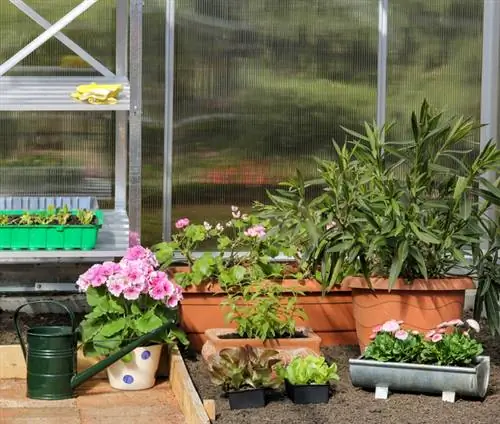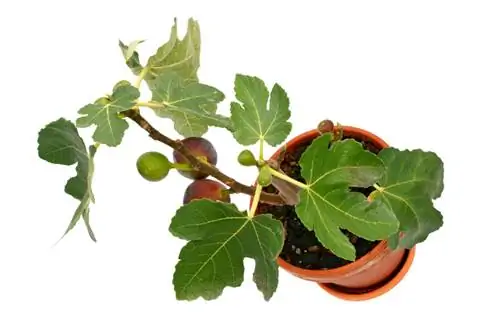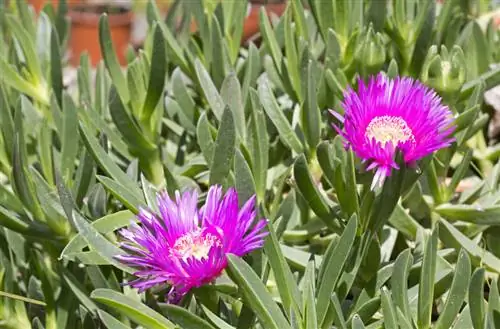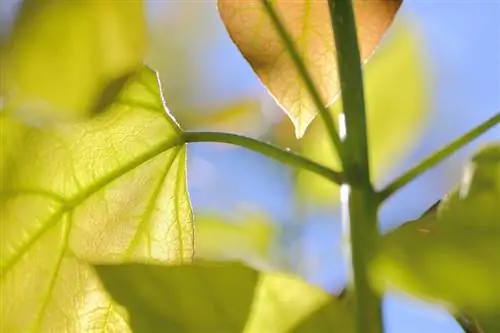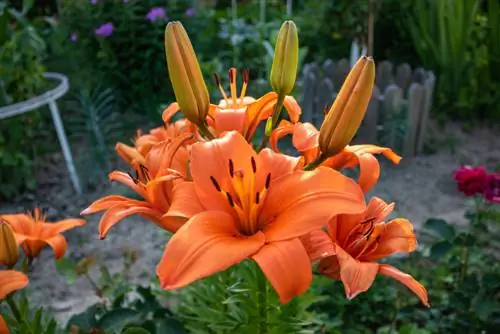- Author admin [email protected].
- Public 2023-12-16 16:46.
- Last modified 2025-06-01 06:02.
With its narrow, long, dark green shiny leaves and numerous flowers in strong colors, the oleander is a real eye-catcher in every garden. However, the shrub, which comes from the Mediterranean region, needs a lot of attention and care so that it can fully develop its beauty.

How do I properly care for oleander in a pot?
To successfully care for an oleander in a pot, you need a wide and deep planter, loamy soil, regular watering and fertilization, a sunny location and a cool, frost-free place to overwinter.
Choose planter and substrate
So that Nerium oleander, as the plant that grows up to five meters high is also known in botanical terminology, really feels comfortable, it needs a plant pot that is as wide as it is deep. The roots of the oleander naturally extend in all directions - always in search of water - although the root ball usually develops in width rather than in depth. So choose a planter that is about twice as wide and twice as deep as the root ball itself. Fill there with moderately humus-rich, rather loamy soil, which ideally consists of a mixture of commercially available potting soil and clay-rich garden soil. You can also mix in a handful or two of sand there.
Care properly for oleander in the pot
Oleanders in pots should be repotted once a year, changing the substrate and always choosing the next larger pot size. If the shrub has become so large and heavy that repotting is difficult, this measure is only necessary every five years. Proper oleander care also includes regular watering - up to three times a day on hot summer days! - as well as regular fertilization. A rich fertilizer for flowering plants (€13.00 on Amazon) is particularly suitable here and you can give it to the oleander about once or twice a week. Oleander is extremely thirsty - and is also one of the plants that cannot be harmed by wet feet - and is a typical heavy feeder. In complete contrast to numerous other Mediterranean plants. Pruning is always done in spring if possible.
Choose a suitable location
Oleander loves the sun and warmth and therefore needs an appropriate location. However, you should place the pot in such a way that the shrub is well protected from wind and rain - the plant needs a lot of water, but not from above.
It is better not to overwinter oleander outdoors
As a Mediterranean plant, oleander is not hardy and can only tolerate light frosts down to around minus five degrees Celsius - and only for a short period of time. For this reason, it is better to overwinter the shrub in cold house conditions at around five degrees Celsius (frost-free, of course), although it does not necessarily have to be bright. Don’t forget to water even in winter!
Tip
It is better not to use rainwater for watering (it makes the substrate acidic), but rather stale and warmed tap water.

